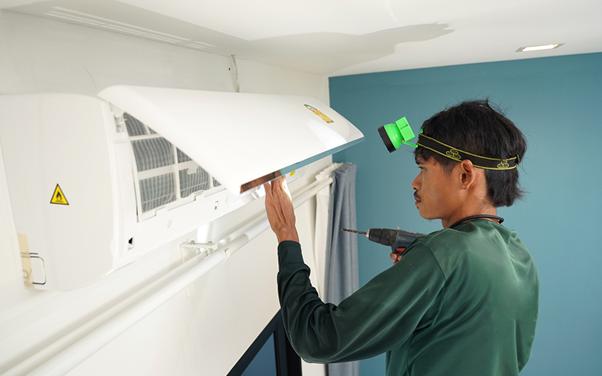The demand for quiet indoor environments has grown significantly, particularly in a densely populated city like Singapore. Whether in residential units, office buildings, or commercial spaces, excessive noise from air conditioning systems is no longer tolerated by end-users. Due to this, air conditioning contractors are placing greater emphasis on delivering systems that minimise operational sound without compromising cooling performance. The shift towards quieter systems is shaping the way air conditioning installation in the city-state is approached, with more advanced designs, improved materials, and innovative installation techniques being adopted.
1. Rising User Expectations for Comfort
The city-state’s urban residents increasingly view noise as a key factor in overall indoor comfort. People working from home or in open-plan offices demand a distraction-free environment where the hum or vibration of an air conditioning unit does not disrupt concentration. Similarly, homeowners want to enjoy a peaceful atmosphere without being interrupted by mechanical noise. Air conditioning contractors now integrate noise considerations early in the design and planning stage, ensuring that the system’s location, ducting, and operational settings contribute to a quieter outcome. This change is driven by the understanding that comfort is no longer defined solely by temperature control, but also by the ability to maintain a calm acoustic environment.
2. Regulatory and Building Code Influences
While the region does not yet have the most stringent noise-level regulations for residential and commercial air conditioning systems, there is growing pressure from both building management bodies and local councils to maintain noise levels within acceptable limits. For example, condominium management committees may impose noise restrictions to prevent disruption between neighbouring units. This instance means air conditioning contractors must not only focus on cooling capacity and energy efficiency but also verify that their chosen equipment complies with noise standards. Failure to meet these expectations can result in disputes, retrofitting costs, and reputational damage for the installer.
3. Advances in Aircon Technology
Modern systems now feature innovations such as variable-speed compressors, improved fan blade design, and insulated casings, all aimed at reducing operational noise. These advancements have allowed aircon installation in Singapore to move beyond purely functional cooling and into the realm of acoustic performance. Quiet inverter systems are becoming a default choice for both residential and commercial projects, while external condensers are now designed with vibration-absorbing mounts to limit noise transfer. Since technology continues to improve, contractors can also offer systems that operate at whisper-quiet levels without sacrificing cooling efficiency, aligning with the growing preference for noise-conscious installations.
4. Growing Demand for High-End Developments
Premium residential developments, luxury condominiums, and high-value office spaces in the city-state are setting new benchmarks for comfort. Buyers in these segments expect not only top-tier cooling performance but also a noise-free experience. That said, air conditioning contractors working on these projects must adhere to tighter noise-level specifications and often collaborate with architects and engineers to integrate acoustic insulation within walls, ceilings, and duct systems. This demand is driving industry-wide adoption of best practices for quiet system installation, even in mid-tier projects.
5. The Impact of Open-Plan Living and Working Spaces
The rise of open-plan layouts in homes and offices has amplified the need for low-noise air conditioning. Unlike enclosed spaces, open areas allow sound to travel freely, meaning any mechanical noise from the air conditioning unit becomes more noticeable. Aircon installation in these environments must account for airflow paths, return-air grille positioning, and the use of acoustic ducting materials to prevent noise from disrupting the space. This trend has made noise reduction not a secondary consideration, but a central factor in installation planning and execution.
Conclusion
Noise reduction has become a defining factor in the success of modern air conditioning projects in the city-state. From changing user expectations to technological advances, the push towards quieter systems is influencing both equipment choice and installation practices. Air conditioning contractors who adapt to these demands stand to gain a competitive advantage, especially as consumers become more aware of the long-term benefits of quiet, efficient systems. Aircon installation for any project, whether residential or commercial, is no longer optional; it is an essential component of quality and customer satisfaction.
Contact Airple for quiet, efficient, and expertly installed air conditioning systems.

